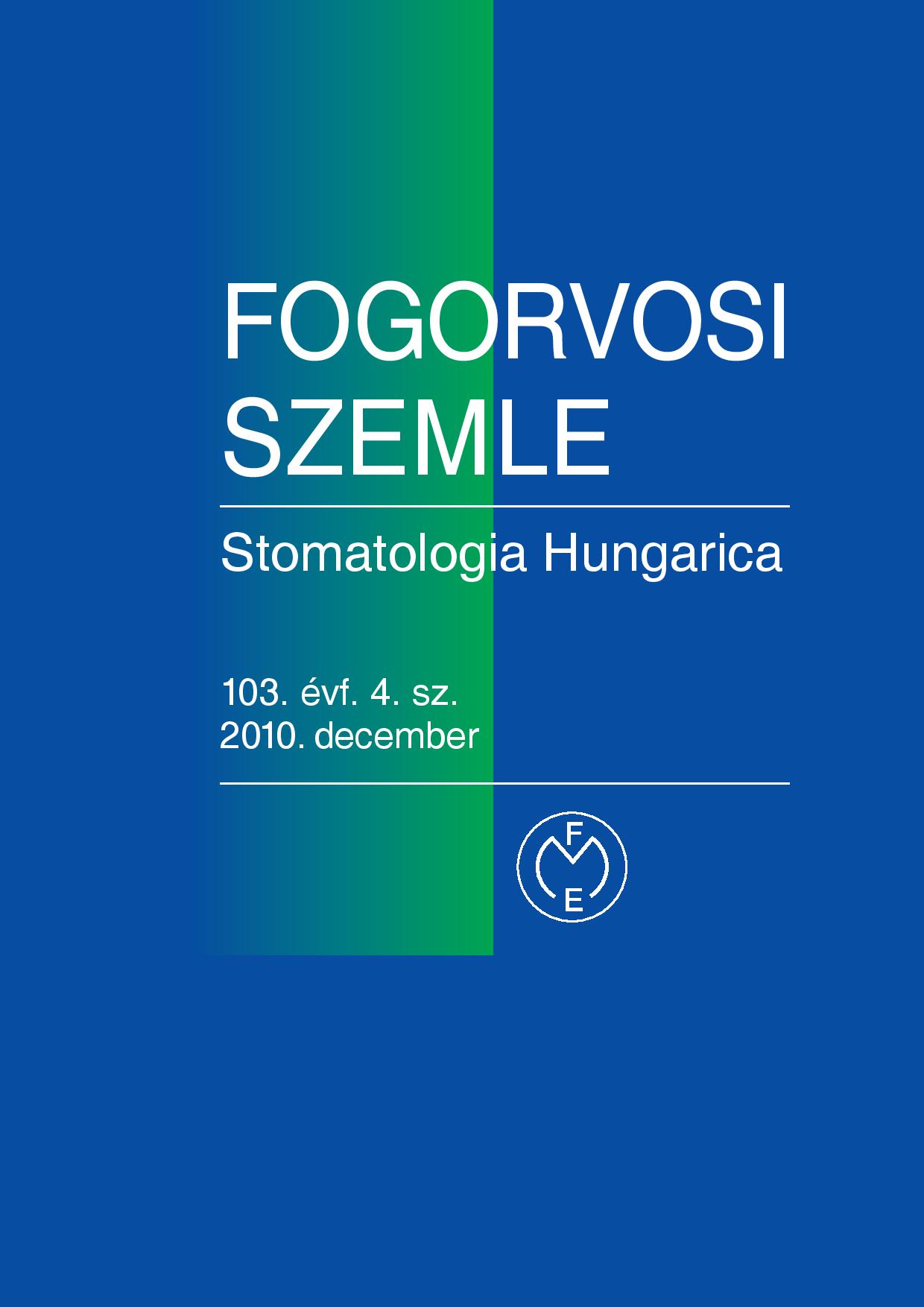Effect of being disabled, dental fear and anxiety on drawings
Abstract
Aim: To investigate if there is an infl uence of being a disabled people (with disturbed body-image), dental fear and anxiety
on several form/shape parameters of drawings. Subjects: Disabled (46) and healthy (33) volunteers (n = 79; male
39, female 40; age: 18,16 ± 3.01 yrs.) were investigated. Methods: Collection of demographic data (gender, age, marital
status, profession), and administration of the Hungarian versions of dental fear and anxiety related scales namely:
DAS, DAQ, DASQ, DFS, DBS, STAI-S, STAI-T and Expectation scale. Free drawing test portraying a person, a mouth,
and a tooth were also administered, and form/shape parameters were analyzed. Results: Mean values of the scales
were: DAS: 10,22 ±3,1; DAQ: 2,21 ±0.9; DASQ: 12,44 ±3.9; DFS: 40,98 ±14,0; Expectation Scale: 2,32 ±0,7, DBS: 34,50
±9,0; STAI-S: 37,56 ±10,7; STAI-T 42,41 ±10.2. Disables subjects scored higher in all of the scales but there was a signifi
cant difference (t-probe, p<0,05) in the case of DBS scale only. Being a disabled infl uenced 2 of person-, 5 of tooth-,
and 3 of mouth-drawing parameters signifi cantly (χ2 probe, p<0,05). Dental fear related scales infl uenced 5 of person-,
5 of tooth-, and 1 of mouth-drawing parameters signifi cantly (one-way ANOVA, p<0,05). Anxiety infl uenced 2 of person-,
1 of tooth-, and none of mouth-drawing parameters signifi cantly (one-way ANOVA, p<0,05). Conclusion: Interestingly,
the infl uence of being a disabled people was the strongest in case of tooth-drawings, and the infl uence of dental
fear on drawing parameters was stronger than that of anxiety.
Copyright (c) 2021 Authors

This work is licensed under a Creative Commons Attribution 4.0 International License.


.png)




1.png)



